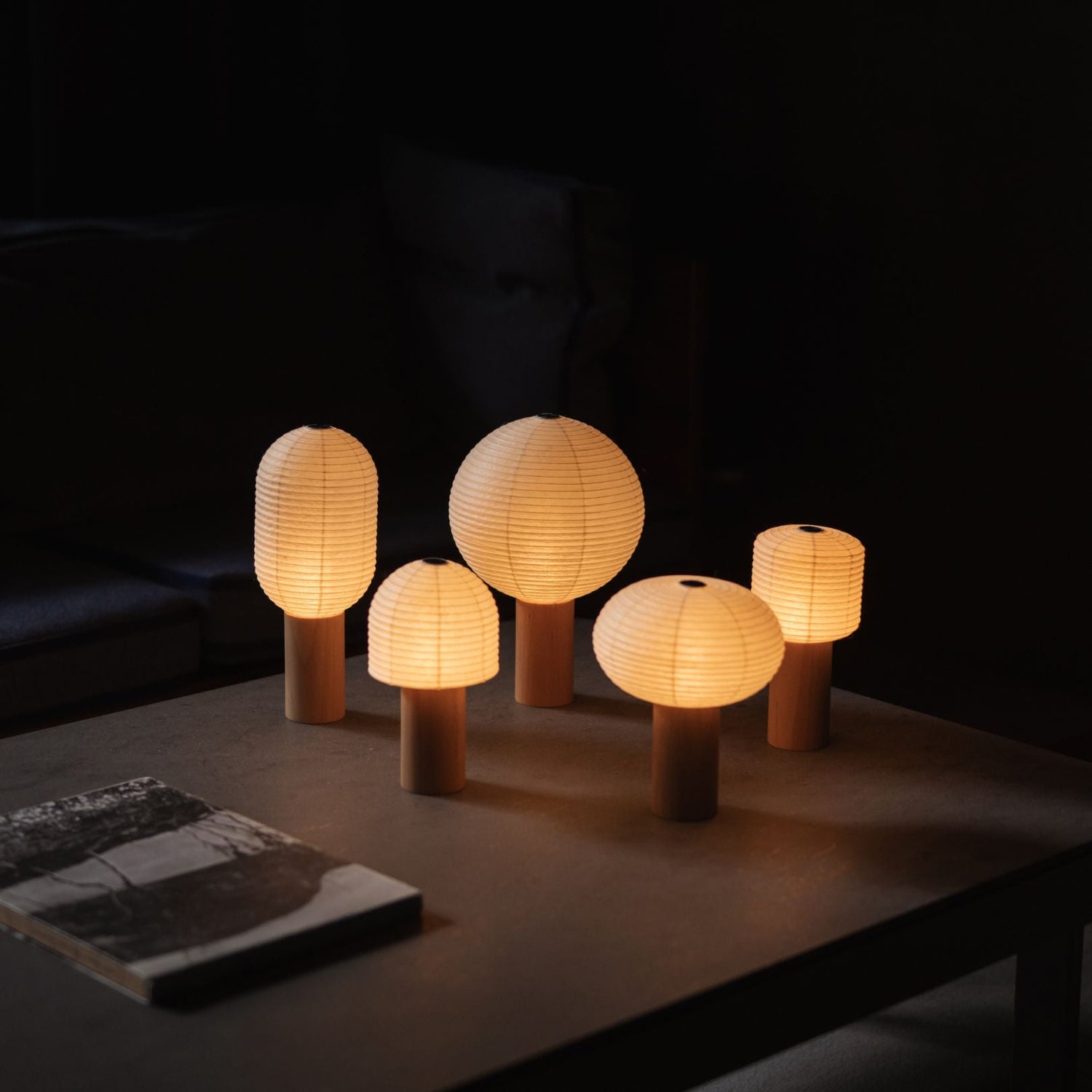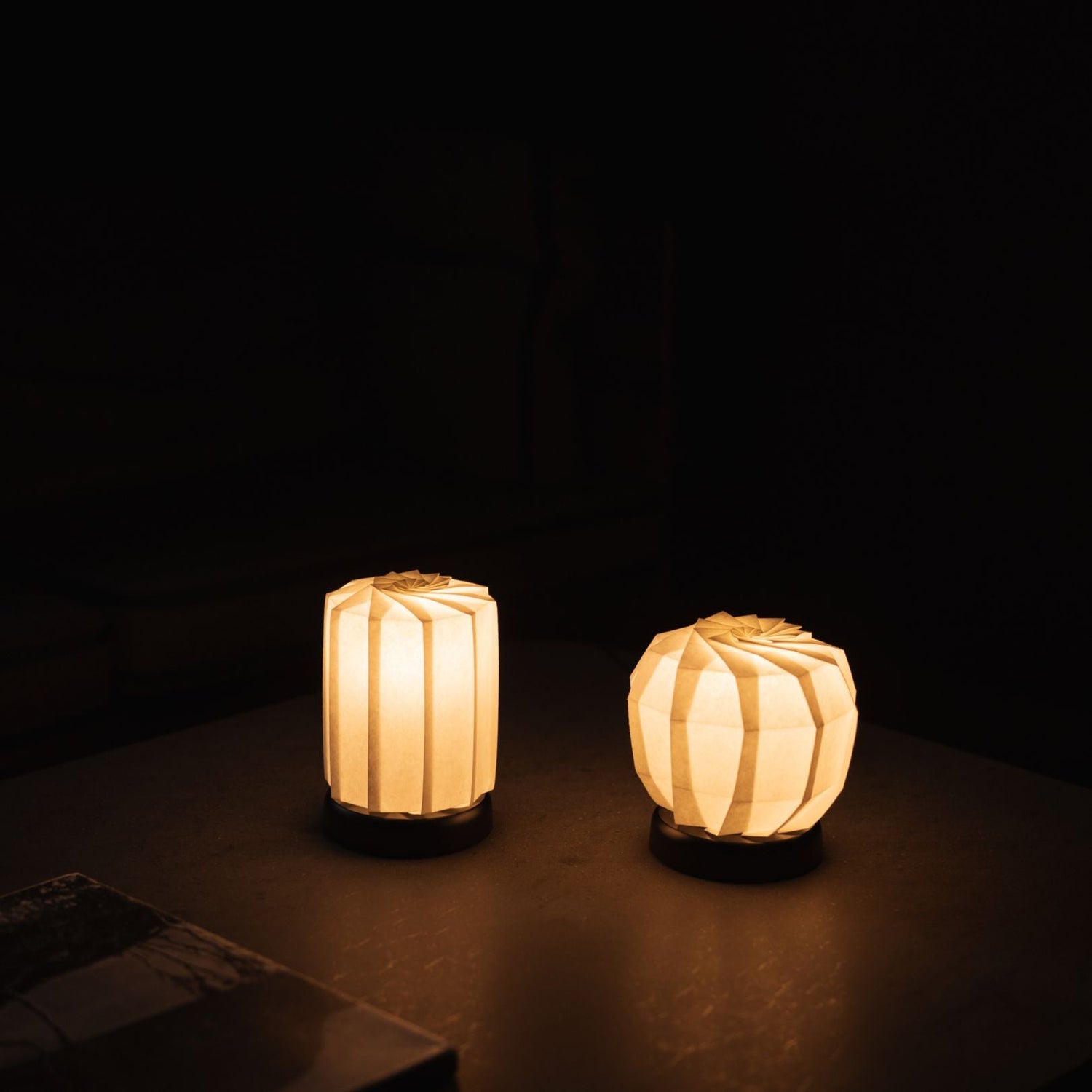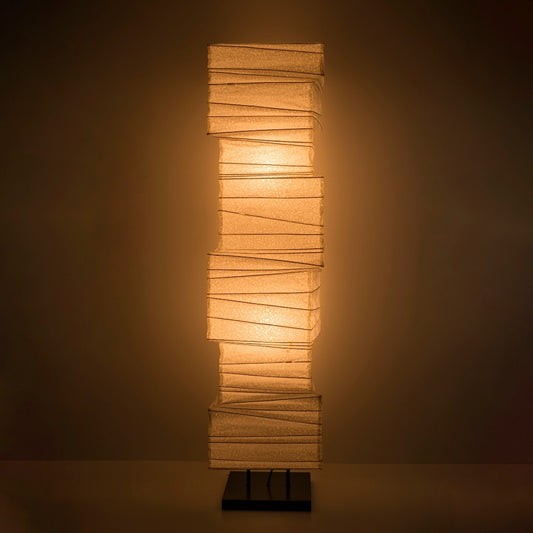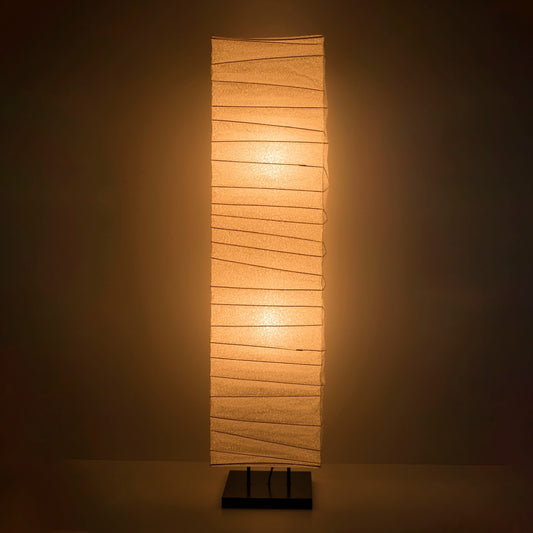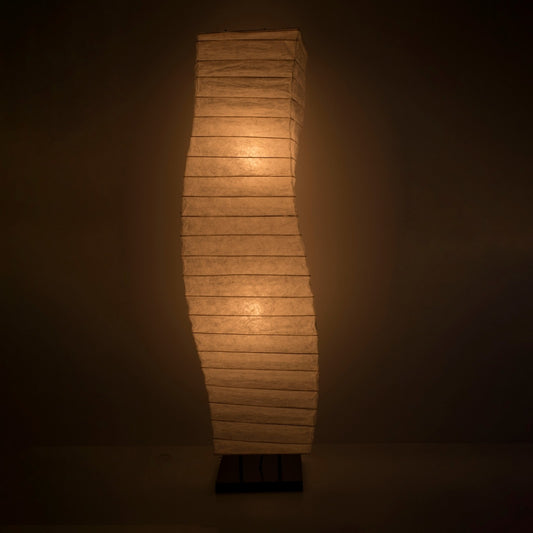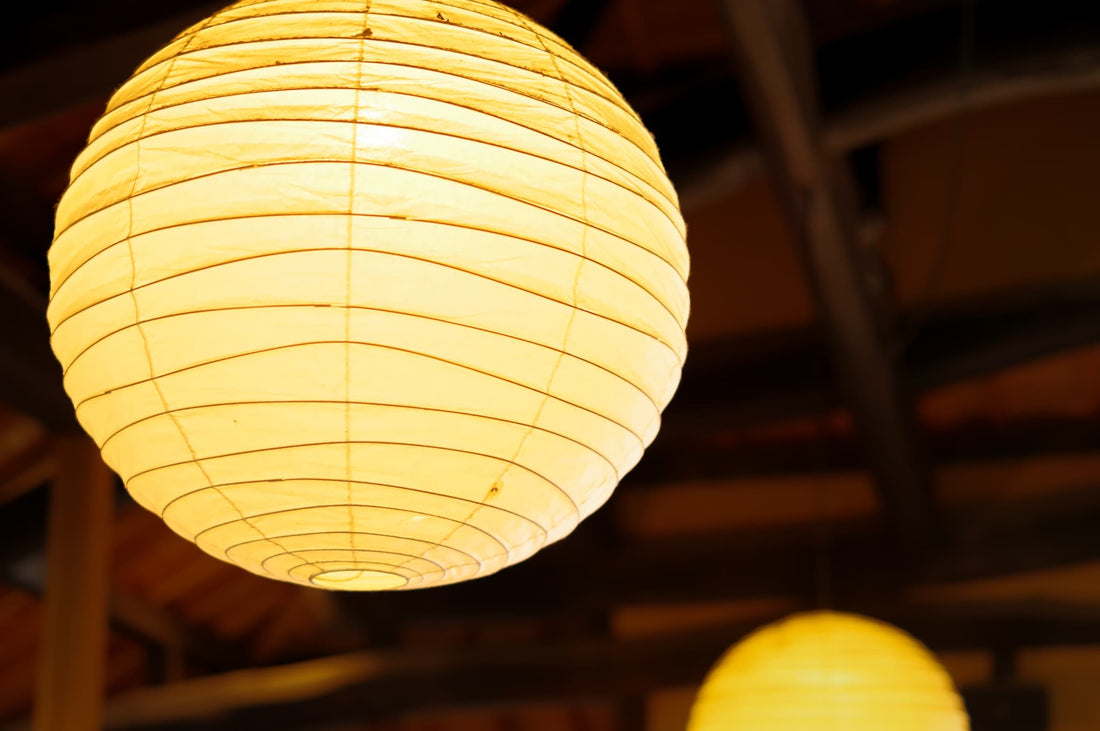
The Allure of Noguchi Lamp: Authentic Paper lamp Akari
Share
Isamu Noguchi's works beautifully blend traditional Japanese craftsmanship with Western modern design. The "AKARI lamp" a symbol of this fusion, continues to be loved worldwide, conveying the beauty and warmth of Japanese culture through light. This article delves into the life of Isamu Noguchi, his iconic art and lighting designs, and the history and techniques of Gifu lanterns that inspired him. By understanding Noguchi's vision and his integration of traditional Japanese aesthetics, we can appreciate the value his art brings to contemporary living spaces.
Table of contents
Isamu Noguchi: Artist & Designer
Isamu Noguchi (1904-1988) was a Japanese-American sculptor, interior designer, and landscape architect known for his works that merged American and Japanese aesthetics. Born in Los Angeles and raised in Japan during his early childhood, Noguchi pursued an artistic path upon returning to the United States at his mother's behest. He studied under the sculptor Gutzon Borglum in New York, and while pursuing medicine, he immersed himself in art and traveled to Paris to study sculpture under Constantin Brâncuși.
After returning to New York, he flourished in sculpture and interior design, gaining recognition for design pieces like the "Noguchi Table." During World War II, he voluntarily entered a Japanese internment camp, where he confronted his complex identity and delved deeper into Japanese culture. After the war, Noguchi visited Japan again and created the "Akari" series, fusing Japanese tradition with modernism. Inspired by Gifu lantern craftsmanship, these works, crafted from delicate washi paper and bamboo, expressed the beauty of light and garnered acclaim both in Japan and abroad. The light texture and uniquely soft illumination brought a warm ambiance to living spaces, establishing Akari as one of Noguchi's masterpieces.
In 1968, a retrospective exhibition was held at the Whitney Museum of American Art, followed by the installation of sculptures like "Black Sun" at the Seattle Art Museum the following year. Furthermore, with the creation of works using Aji stone from Aji-cho, Kagawa Prefecture, he established a studio in Japan and formally launched the "Akari" series. From then on, Noguchi continued his artistic endeavors, traveling between Japan and the United States, establishing his reputation in both countries, and influencing many with his unique aesthetic sense.
Noguchi Akari Lamps & Gifu Lanterns
Gifu lanterns, which influenced Isamu Noguchi's Akari series, are a traditional Japanese craft produced in the Mino region of Gifu Prefecture, Japan. They are made using Mino washi paper and bamboo, with a history of over 1,000 years, and are crafted with artisanal techniques honed over 300 years. Mino washi paper is thin yet durable, and Gifu bamboo is ideal for intricate processing. These lanterns are characterized by their delicate and elegant designs, with autumn grasses and landscapes painted on the lampshades. During the Edo period, they were presented to the shogunate, and in the Meiji era, they caught the eye of Emperor Meiji, spreading their popularity throughout Japan. The most common shape of Gifu lanterns is the hanging egg-shaped "Gosho-chochin," but there are also stationary types like the "Ouchi-andon."
Gifu lanterns are crafted through nine traditional steps. First, "dosa" is applied to the washi paper to give it stiffness and luster, preventing ink bleeding. Next, a "surikomishi" (rubbing master) rubs autumn flowers and landscapes onto the "hibukuro" (fire bag) section. Bamboo strips are then evenly wound to form the shape, and finally, an "eshi" (painter) applies the finishing touches. This delicate manufacturing process requires advanced skills in rubbing, hand-painting, and the expertise of seasoned artisans. Isamu Noguchi's Akari series is also produced in Gifu Prefecture, Japan, by skilled craftspeople using a similar manufacturing process.
Designated as a traditional craft in 1995, Gifu lanterns are used as "bon-chochin" during the Obon festival, serving as lights to remember the deceased and becoming familiar in households. Simultaneously, they are highly regarded as interior lighting and are cherished overseas.
The Allure of Akari Lamps
Isamu Noguchi's "AKARI Lamp" series, born from the fusion of traditional Japanese crafts and modern design, brings the warmth of Japanese "akari" (light) into contemporary spaces and is loved globally. Utilizing traditional Gifu lantern-making techniques, they feature a simple yet beautiful design of washi paper wrapped around bamboo strips. When lit, a gentle light diffuses through the washi paper, creating a serene, moonlight-like ambiance.
The AKARI series includes iconic pendant lights like the "30A" and "45A," all characterized by designs that blend seamlessly into any space. The regularly wound bamboo strips and washi paper shades embody Japanese aesthetics, possessing a simple yet evocative presence. Notably, the "45D," with its irregularly wound bamboo strips, has a sculptural quality, adding an artistic element to the space.
Noguchi conceived AKARI not merely as lighting fixtures but as "sculptures of light." His designs transcend their function as light sources, exuding the presence of visual art pieces that adorn a space even when unlit. AKARI lamps are cherished not only for their beauty but also as symbolic objects bridging Eastern and Western aesthetics, bringing tranquility and serenity to homes.
Types of Noguchi Akari Lamps
Isamu Noguchi's Akari Lamps encompass the following series, each with distinctive designs:
STAND
Characterized by three or four thin iron wire legs, they are designed to be as light as possible. They offer a diverse range of shapes and sizes suited for bedside use, side tables, or as floor lamps.
FIRST model
This series is based on traditional Gifu lanterns. At the time of its release, plain lanterns were strongly associated with funerals and were not favored for interior use. Consequently, Isamu Noguchi also created versions with hand-painted abstract patterns and calligraphy. Subsequently, the simple and modern white lanterns gained immense popularity in Western countries.
UF
Featuring a redesigned stand with folded legs reminiscent of spider legs, this series spawned a new line of products.
PENDANT
These ceiling-suspended lamps have the simplest structure in the AKARI series. By stretching the shade with "mabari" (bamboo stretchers) and setting the bulb in the center, a sculpture of light is complete.
PENDANT/LONG
Primarily designed for ceiling suspension, these are large-sized AKARI lamps. They command an imposing presence in spacious areas like living room corners, atriums, guest rooms, and lobbies.
FLOOR STAND
Pendant-type AKARI can be used as floor lamps with separately sold dedicated fixtures.
BB series
This series, with bamboo used for the stand's support column, exudes a particularly Japanese ambiance among the AKARI lamps.
Japanese Paper Lamps: Inspiration for Akari
Japanese paper lamps, epitomized by Isamu Noguchi's "AKARI" series, possess a captivating blend of tradition and innovation. Based on Gifu's lantern-making techniques, these lamps are crafted from simple structures of washi paper and bamboo strips. Light gently diffuses through the washi paper, imbuing the space with a serene warmth. The light emanating from Japanese paper lamps transcends their function as mere lighting fixtures, establishing their presence as "sculptures of light," maintaining their beauty even when unlit.
One allure of paper lamps lies in the warmth of natural materials and the delicacy born from artisanal handwork. The process of assembling bamboo strips and washi paper by hand is underpinned by over 300 years of Gifu lantern craftsmanship. The delicacy of washi paper and the suppleness of bamboo strips create a poetic presence.
Furthermore, the soft light emitted by paper lamps envelops the entire space like moonlight. The light gently reflects off walls and floors, with even shadows enhancing the space as design elements. The design, which preserves tradition while blending into modern living spaces, bridges Japanese and Western aesthetics, contributing to their enduring popularity both in Japan and abroad.
Japanese paper lamps have long been cherished in people's lives. Through contemporary approaches like the AKARI series, their appeal has further expanded, gaining recognition as interior design elements.
Unique Japanese Paper Lamp Designs
Besides Isamu Noguchi's Akari Lamp series, various paper lamps, blending traditional Gifu lantern techniques with modern design, are crafted by artisans in Gifu Prefecture, Japan, including floor lamps, table lamps, and bedside lamps. Here are some paper lamps with captivating soft illumination and distinctive designs:
Japanese Washi Paper Floor Lamp "PAPER STONE" (Gifu, Japan)
Resembling a large ice stone, the "PAPER STONE" floor lamp gently illuminates spaces with soft light, incorporating Gifu's traditional crafts using Mino washi paper. Handmade with the "nagashizuki" (papermaking) technique by artisans, the Asakura-Nansui paper mixed with hemp fibers creates crystal-like light patterns, producing a tranquil atmosphere. This lamp embodies Japanese aesthetics and craftsmanship.
Japanese Washi Paper Floor Lamp "BEANS LIGHT" (Gifu, Japan)
With its adorable, unique bean-like form, "BEANS LIGHT" is a washi paper lamp characterized by its soft, rounded shape, made using techniques from the Mino region of Gifu Prefecture. The gentle light emitted from the Mino washi paper warmly illuminates the space, creating a calming ambiance. It serves as a unique accent lamp in bedrooms or living rooms.
Japanese Washi Paper Table Lamp "AKASHI" (Gifu, Japan)
"AKASHI" is a washi paper table lamp that blends traditional techniques with modern design, crafted by Wakabayashi Buddhist Altar Manufacturer, founded in 1830. The soft light from the beautiful washi paper warmly envelops the space, while the sturdy oak base adds a natural warmth, creating a relaxing atmosphere. The elegant design, inspired by the Bonbori lanterns of the Obon festival, produces a refined and sophisticated space.
Japanese Origami Paper Table Lamp - tutu (Kyoto, Japan)
"tutu" is a frameless washi paper table lamp that combines "origami," a traditional Japanese technique, with "Kyohyogu," a traditional Kyoto technique. The folds act as a frame, creating shadows when illuminated and allowing you to enjoy a unique texture. The soft light of the washi paper creates a calming atmosphere, making it the perfect lighting for relaxation.
Japanese Washi Paper Table Lamp "Torchin SQUARE" (Fukuoka, Japan)
"TORCHIN SQUARE" is a portable washi paper table lamp that incorporates the techniques of Yame lanterns, which have a 200-year tradition. The soft light elegantly illuminates the space, and the touch sensor allows for three levels of brightness adjustment. The exquisite washi paper and high-quality Japanese materials gently create a special moment in everyday life.
The works of Isamu Noguchi, including the "noguchi lamps (AKARI lamps)," serve as a bridge between Japan and the West, conveying the allure of the fusion of traditional beauty and innovation. Noguchi's designs, based on the techniques of Gifu lanterns, transcend mere lighting, bringing poetic beauty and warmth to a space. Through his works, experience the calming time brought by light and the artistic value of "light sculpture" that Noguchi aimed for.







